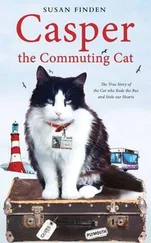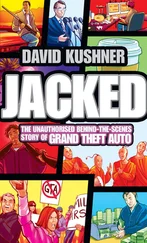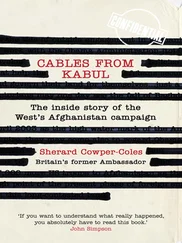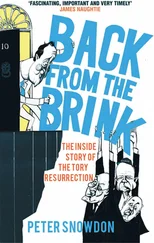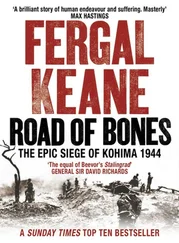PART I THE CALM
PHYSICALLY AND CULTURALLY, the harbor is the center of Sydney, never more so than the day after Christmas, when the start of the 630-mile race from Sydney to Hobart, a city on the east coast of Tasmania, causes it to become an enormous natural amphitheater. Virtually everyone in Sydney watches the start, either in person or on television. Parks, backyards, and rooftops overflow with thousands of spectators, most of them with drinks in hand. The harbor itself is crowded with hundreds of boats and is noisy with air horns and low-flying helicopters.
No place is busier than the source of all the excitement, the Cruising Yacht Club of Australia. The club was founded in 1945, the same year it sponsored the first Sydney to Hobart Race. The CYC’s home is an undistinguished, two-story brick building on the bank of Rushcutters Bay, just a couple of miles east of downtown Sydney. Its pretensions, to the extent it has any, are related to “the Hobart,” as the race is usually called, rather than to social distinctions. Sailing has always played an important role in Australian life. It’s not surprising to hear policemen and taxi drivers describe themselves as yachtsmen. On an island as big as the United States but with a population of less than 19 million, access to the waterfront has never been limited to the rich. The CYC’s founders wanted to make sure it stayed that way, and in 1998 its 2,500 members paid annual dues of just $250, a tenth of what they were at some yacht clubs in the United States and Europe.
But although the CYC was modest in dues, it was not so when it came to its race. The main bar, which opens onto a large deck and a network of docks, is adorned with photographs of evocatively named Hobart-winning yachts: Assassin, Love & War, Ragamuffin, Rampage, Sagacious, Scallywag, Screw Loose , and Ultimate Challenge. In the slightly more formal bar on the second floor, a plaque carries the names of forty-three men who had completed at least twenty-five Hobarts. Although women had been competing regularly since 1946, none had yet earned a place on the plaque.
The CYC’s race draws the biggest names in sailing as well as prominent figures from other fields. Rupert Murdoch competed in six races, and his fifty-nine-foot yacht Ilina , a classic wooden ketch, came in second in 1964. Sir Edward Heath, the former British prime minister, won in 1969. Three years later, Ted Turner shocked other skippers by brazenly steering his American Eagle through the spectator boats after the start of the race—and then going on to win it. In 1996, Hasso Plattner, the multibillionaire cofounder of SAP AG, the German computer software giant, won in record-breaking time.
The very first race took place after Captain John Illingworth, a British naval officer who was stationed in Sydney during World War II, was invited to join a pleasure cruise from Sydney to Hobart, Australia’s second-oldest city and at one time an important maritime center. Only if it’s a race, he is said to have responded. It was agreed, and Illingworth’s thirty-nine-foot sloop Rani beat eight other yachts to win the first Hobart in six and a half days. Until the 1960s it usually took four or five days to complete the course. In the following decades, the average time required shrank to three or four. Plattner’s Morning Glory took just over two and a half days in 1996. The quickening pace reflected two of the biggest changes in competitive sailing: first, the move away from wooden boats, which were constructed according to instinct and tradition, to ones designed with the help of computers and built from fiberglass, aluminum, and space-age composite materials, and second, the transformation of what had been a purely amateur sport to one with an expanding number of full-time professionals.
For most of its history, sailing had proudly resisted the move to professionalism that had transformed many sports. But even Sir Thomas Lipton—whose five spirited but unsuccessful America’s Cup campaigns, which stretched from 1899 through 1930, earned him an almost saintlike reputation—understood the value of sponsorship. The publicity engendered by his prolonged pursuit of the Cup did much to make his tea a popular brand in the United States.
Since then, the level of competition has steadily risen, requiring increasing amounts of time and money. In 1977, Ted Turner spent six months and $1.7 million preparing his winning America’s Cup campaign. The only compensation he gave his crew was room and board. In 2000, five American contenders for the Cup planned to spend the better part of three years and more than $120 million preparing for the contest. Patrizio Bertelli, the head of the Italian fashion house Prada, provided the syndicate representing his country with a $50 million budget.
Ellison, who planned to compete for the America’s Cup in 2003, expected to spend at least $80 million. He would pay many members of his crew upwards of $200,000 a year for the more than two years they would train together. Ellison, who intended to sail on the boat—at least some of the time as its helmsman—would also take advantage of computer-based performance analyses and boatbuilding technologies that had been unthinkable even a few years earlier.
Turner, who had sailed on Sayonara for several races, was of two minds about what has happened to the sport he once dominated. During one race, he told Gary Jobson, his longtime tactician, “There are so many computers. Whatever happened to sailing by feel?”
As one of the computer industry’s pioneers, Ellison had no such qualms.
Ellison, who won the Hobart in 1995, had two goals for the 1998 race. First and foremost, he wanted to take the record away from Plattner. After Bill Gates, Plattner was Ellison’s most important competitor in the software business, and sailing had intensified their rivalry and added a deeply personal dimension. “It’s a blood duel,” Ellison would say, without the slightest suggestion that he was anything but deadly serious. He boasted that his yacht Sayonara , which didn’t race in the Hobart the year the record was set, had never lost to Plattner’s Morning Glory. Ellison and Plattner were not on speaking terms, but they had found other ways to express themselves. During one regatta, Plattner—incensed by what he felt was unsportsmanlike behavior by Ellison—dropped his pants and “mooned” Sayonara ’s crew. Ellison’s other goal was to beat George Snow.
Snow, a charismatic Australian who had won the Hobart in 1997, and Ellison could hardly have been more different from each other. The crew on Snow’s yacht, Brindabella , was almost all amateur. On Sayonara , with the exception of two guests—one of them Lachlan Murdoch, Rupert’s eldest son and heir apparent—everyone was a professional. Ten of Ellison’s twenty-three crewmen were members of Team New Zealand, which had won the America’s Cup in 1995 and planned to defend it in 2000.
Ellison had always been upsetting traditions and bucking the odds. After his mother decided she couldn’t take care of him, he was adopted by an aunt and uncle. Ellison never got along with his adoptive father, Louis Ellison, a Russian immigrant who took his name from Ellis Island and worked as an auditor. Growing up in a small apartment on the South Side of Chicago, Ellison wasn’t interested in school or organized sports or anyone telling him what to do. “I always had problems with authority,” Ellison would explain. “My father thought that if someone was in a position of authority that he knew more than you did. I never thought that. I thought if someone couldn’t explain himself, I shouldn’t blindly do what I was told.”
Читать дальше



